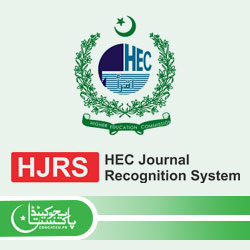RESISTING THE IRRESISTIBLE: SUSPENDED SELF-IDENTITY IN PAKISTANI ENGLISH NARRATIVES ON TRIBAL SOCIOPOLITICAL DYNAMICS
DOI:
https://doi.org/10.58800/bujhss.v6i2.202Keywords:
Consciousness, hegemonic exploitation, self-discipline, humanness, Suspended self identityAbstract
This research explores the formula that power corridors employ to instill self-dehumanization in subjects by exploiting their consented loss of self-identity as portrayed in Jamil Ahmed’s The Wandering Falcon. Principally, the state of humanness refers to the distinct nature and the particular characteristics that distinguish humans from nonhumans. Moreover, it is only the realization of a positive self-concept that provides individuals with an impetus to strive for fundamental rights and resist against hegemonic exploitations. In this paper, I will argue that the subjects in the novel are not merely overtly dehumanized and publicly coerced rather they willingly resign to foster, what Carl Roger terms as, positive self-concept. Moreover, employing the lens of Althusserian RSAs, I discuss how the rules and regulations shaped by jirga and armed forces and designed identity fashioned in cultural institutes silently and swiftly seize all human agency and experiences in the capacity of reasoning, self-discipline, morality, feelings, consciousness of surrounding & psychological states of existence in order to develop an enforced dehumanization in the tribal people in the given novel. The study maintains that the common masses are often tactfully exploited by making them believe that they lack apposite human identity and, therefore, they deserve no voice against the so-called regulations commissioned by the brokers of civilization and prosperity.
Downloads
Published
How to Cite
Issue
Section
License

This work is licensed under a Creative Commons Attribution-NonCommercial 4.0 International License.






